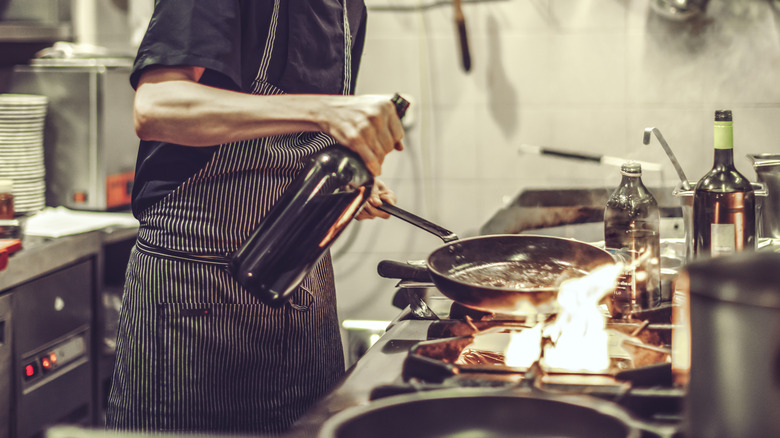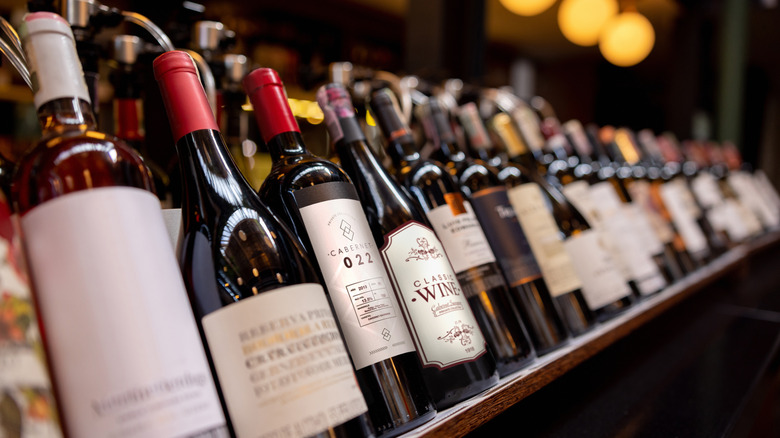Alton Brown's Top-Tier Tips For Deglazing With Wine
If you don't normally cook with wine, the idea of doing so might seem intimidating. It's often associated with more complex recipes like boeuf bourguignon, or desserts that are flambéed for dramatic presentation. In reality, you can incorporate wine into a lot more recipes than you'd probably think, and any dish that calls for a sauce or gravy can benefit from wine if you follow Alton Brown's tip.
Instead of tossing your pan straight into the sink after you're done searing your meat or sauteing your vegetables, the celebrity chef recommends pouring some wine into it. The fond that's left behind in a pan after cooking (or what Brown referred to as "chemically complex crusty pan scab" on his cooking show "Good Eats") is packed with flavor, and by adding wine, you can turn it into a tasty sauce. This method, which is technically called deglazing, is an easy way to add more flavor to a dish, not to mention a great way to use up leftover wine.
Deglazing with wine
You don't need to follow exact measurements when deglazing a pan with wine, but generally speaking, you should use enough wine to fully submerge the fond. To effectively turn it into a sauce, you'll need to bring it to a boil to remove the taste of the alcohol then lower it to a simmer. While the wine cooks, it's important to whisk the mixture to loosen the fond and combine it with the wine. The smell and consistency are the best indicators of doneness; simply take it off the heat when there's no alcohol aroma, and the wine has thickened.
It's worth noting that cast iron pans should be avoided for deglazing with wine. While the material does produce plenty of flavorful fond, it doesn't mesh well with wine. No matter what type of pan you use, however, Alton Brown stressed "Good Eats" episode that you should keep a pan lid and fire extinguisher close by when deglazing. You may not need one, but let's not forget alcohol is flammable.
What type of wine does Alton Brown cook with?
In his coq a vin recipe, Alton Brown recommends pinot noir, but notes you can use any red wine. On the other hand, for his chicken piccata recipe, which he shared with "Today," he uses white wine instead, preferably sauvignon blanc. So how do you know when you should deglaze with white wine or red wine? The best way to determine this is to think about the wine you'd want to enjoy alongside that meal. For example, white wine with fish, or red wine with steak. Chances are the wine pairing will taste just as good in the form of a sauce.
If you're still not sure what type of wine to deglaze with, any dry wine, as opposed to a sweet, dessert wine, is usually a safe bet. You may think cheap wine is also a no-go, but Alton Brown says that's not necessarily the case. "I'd rather be [pleasantly] surprised/delighted by a $15 bottle than to quaff a $200 bottle," he once wrote in a Q&A with the eGullet Society for Culinary Arts & Letters. Contrary to popular belief, the qualities that make wine cheap become almost undetectable after being heated and combined with other ingredients, so don't hesitate to deglaze with a more affordable bottle.


